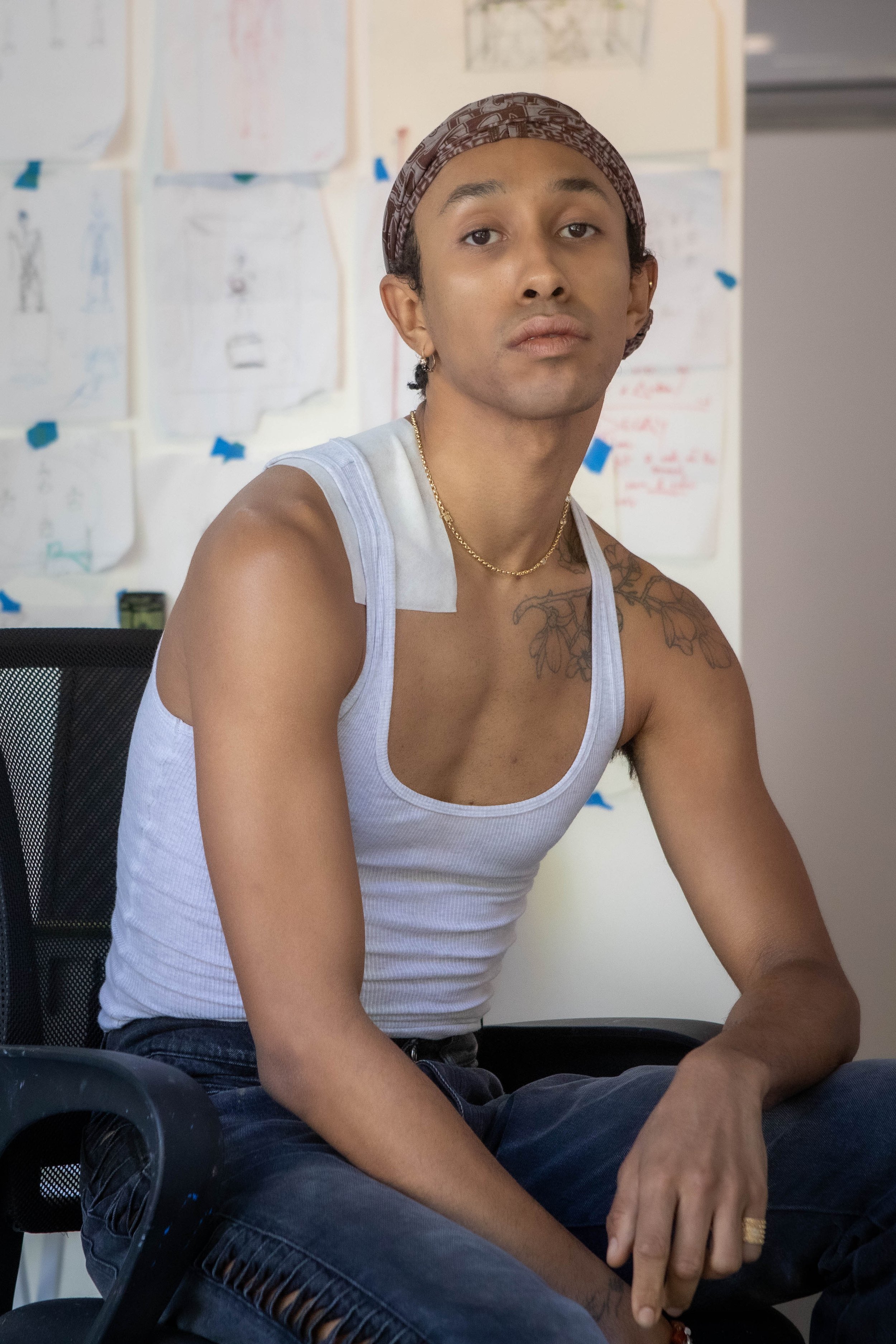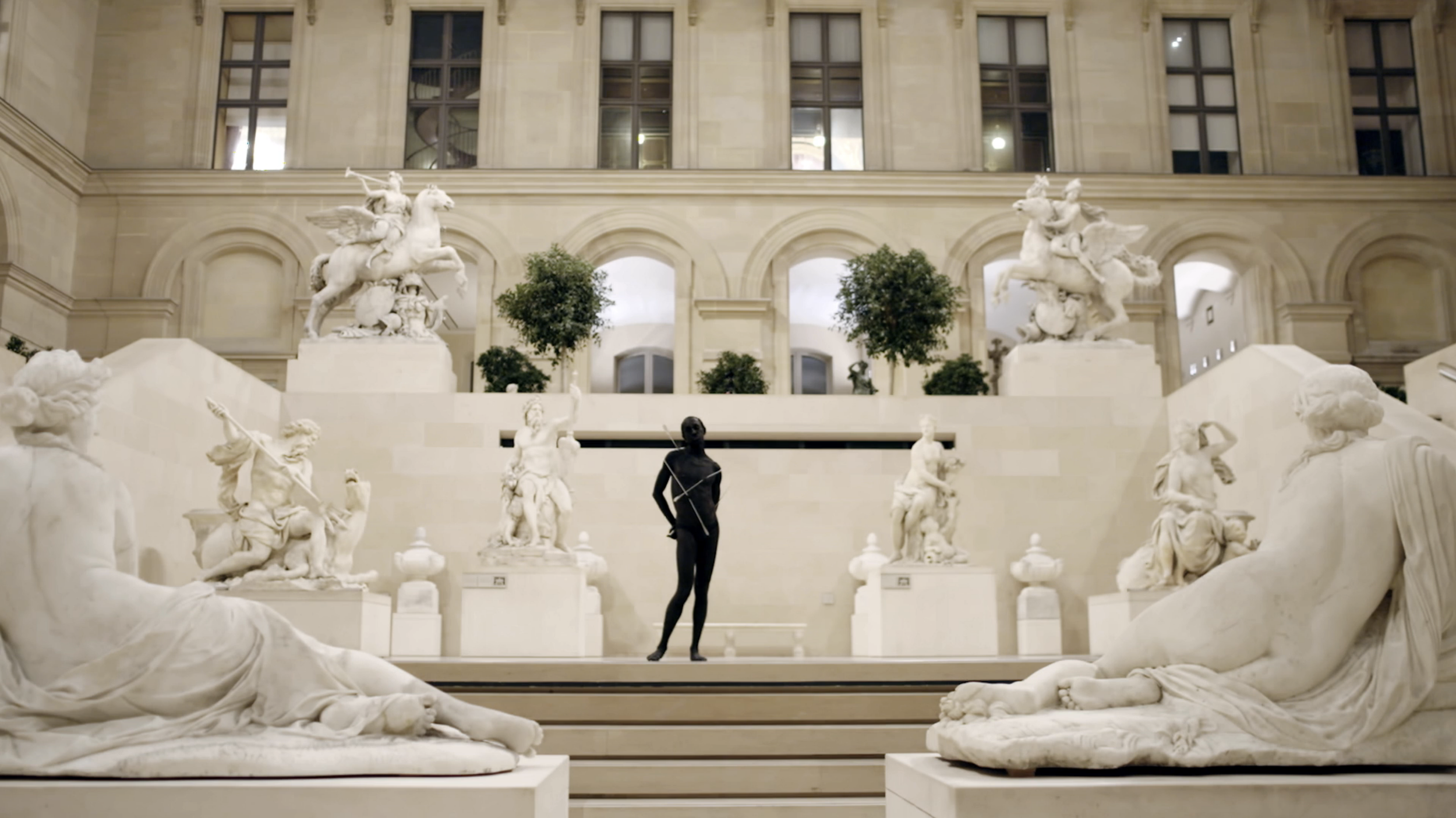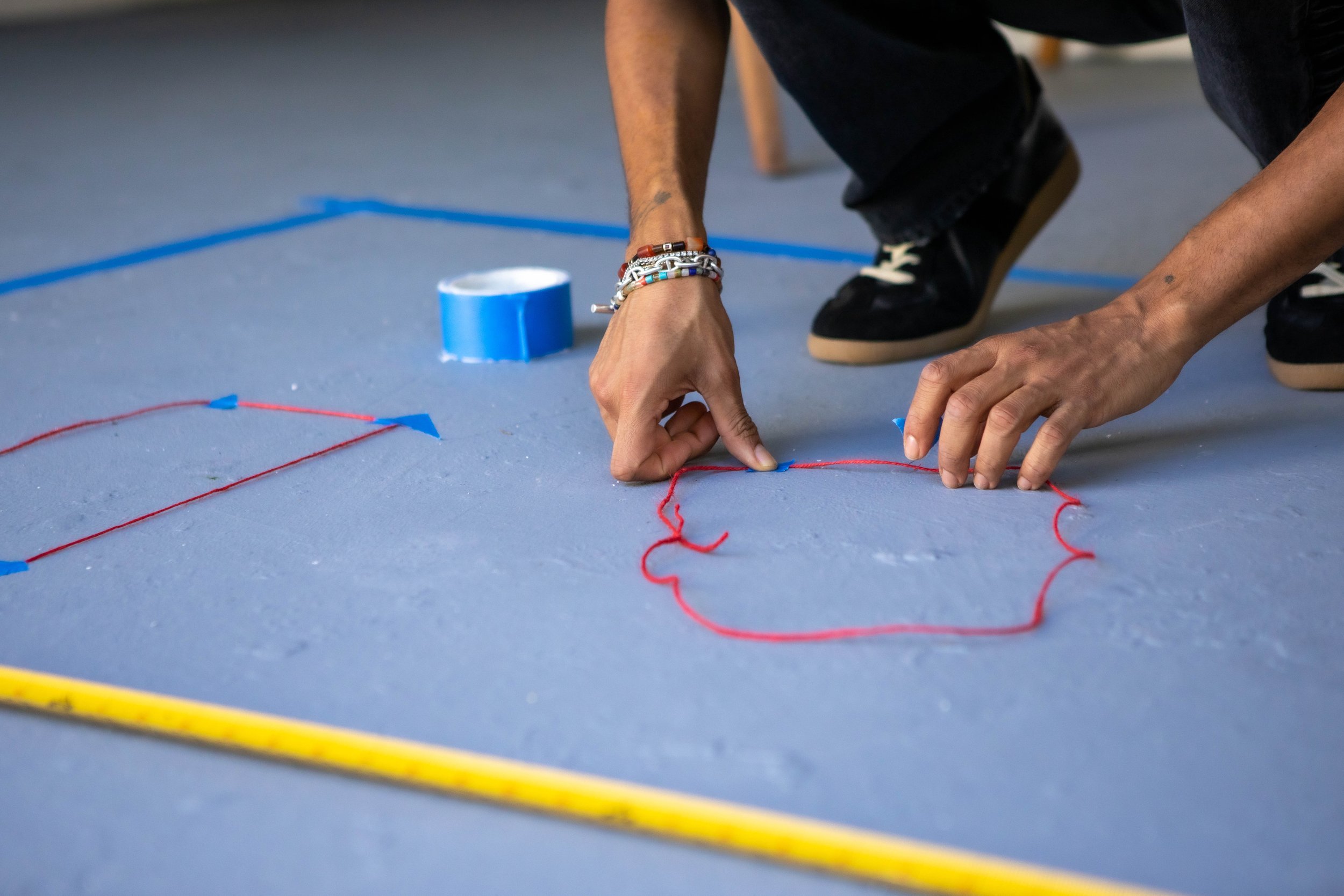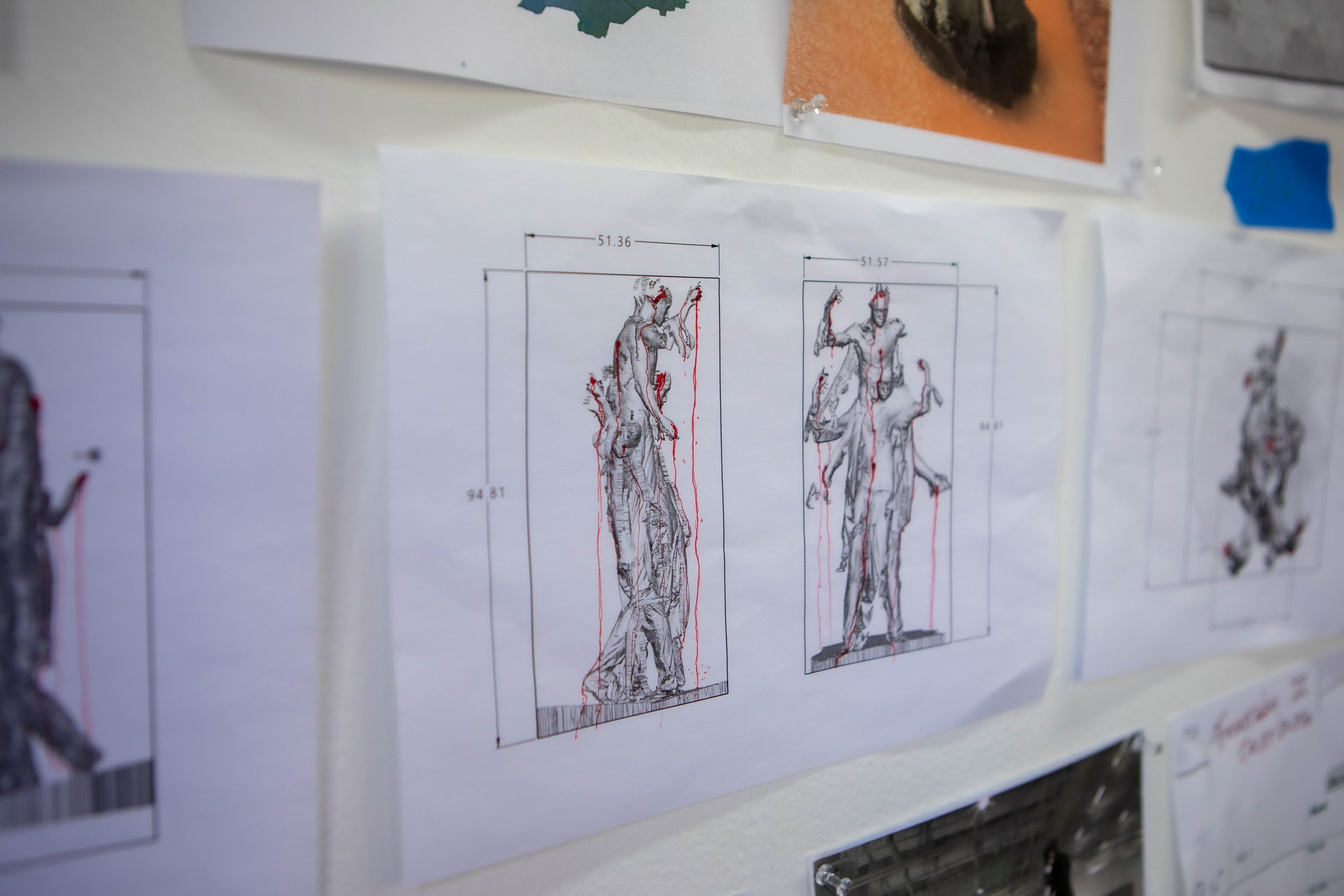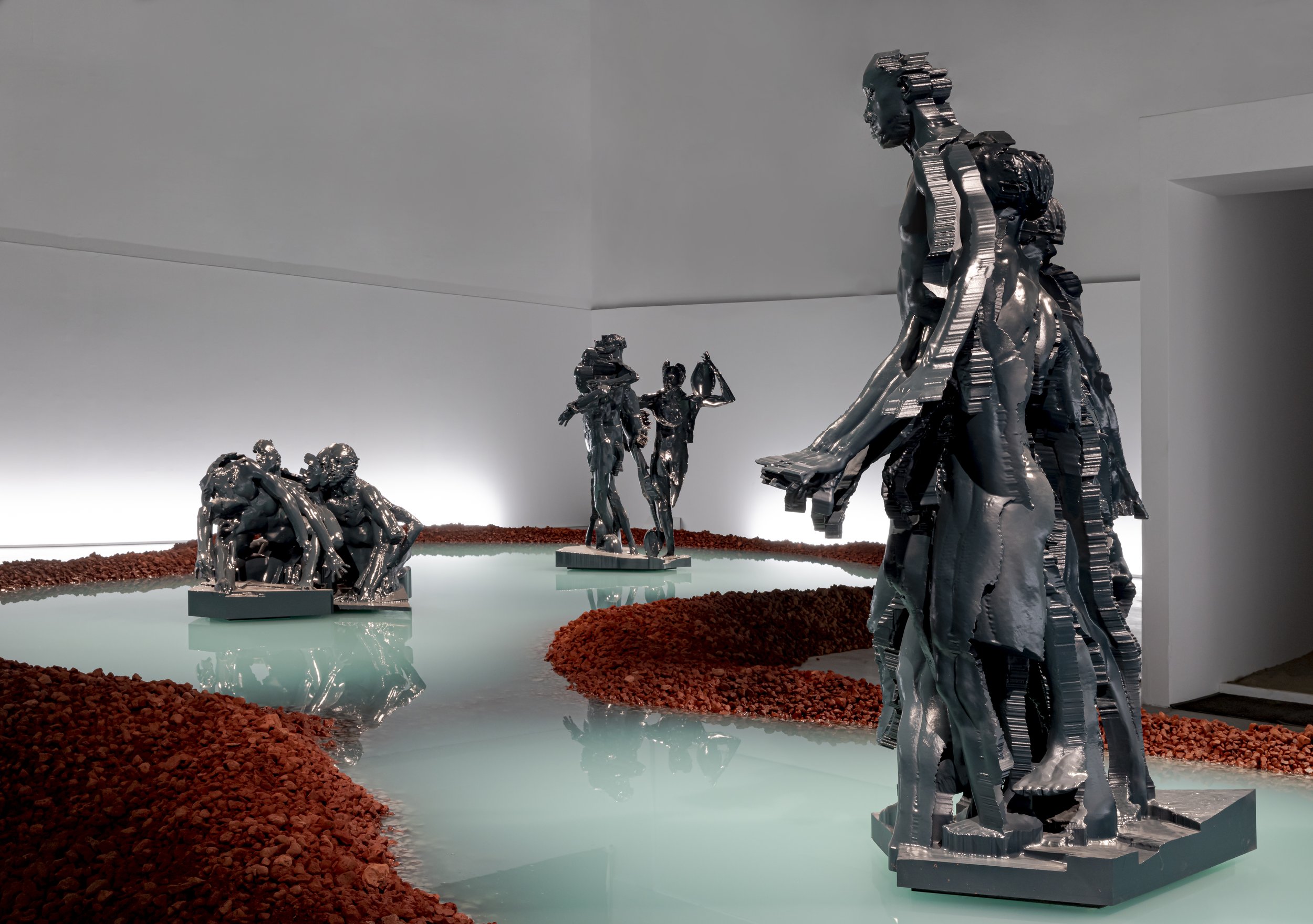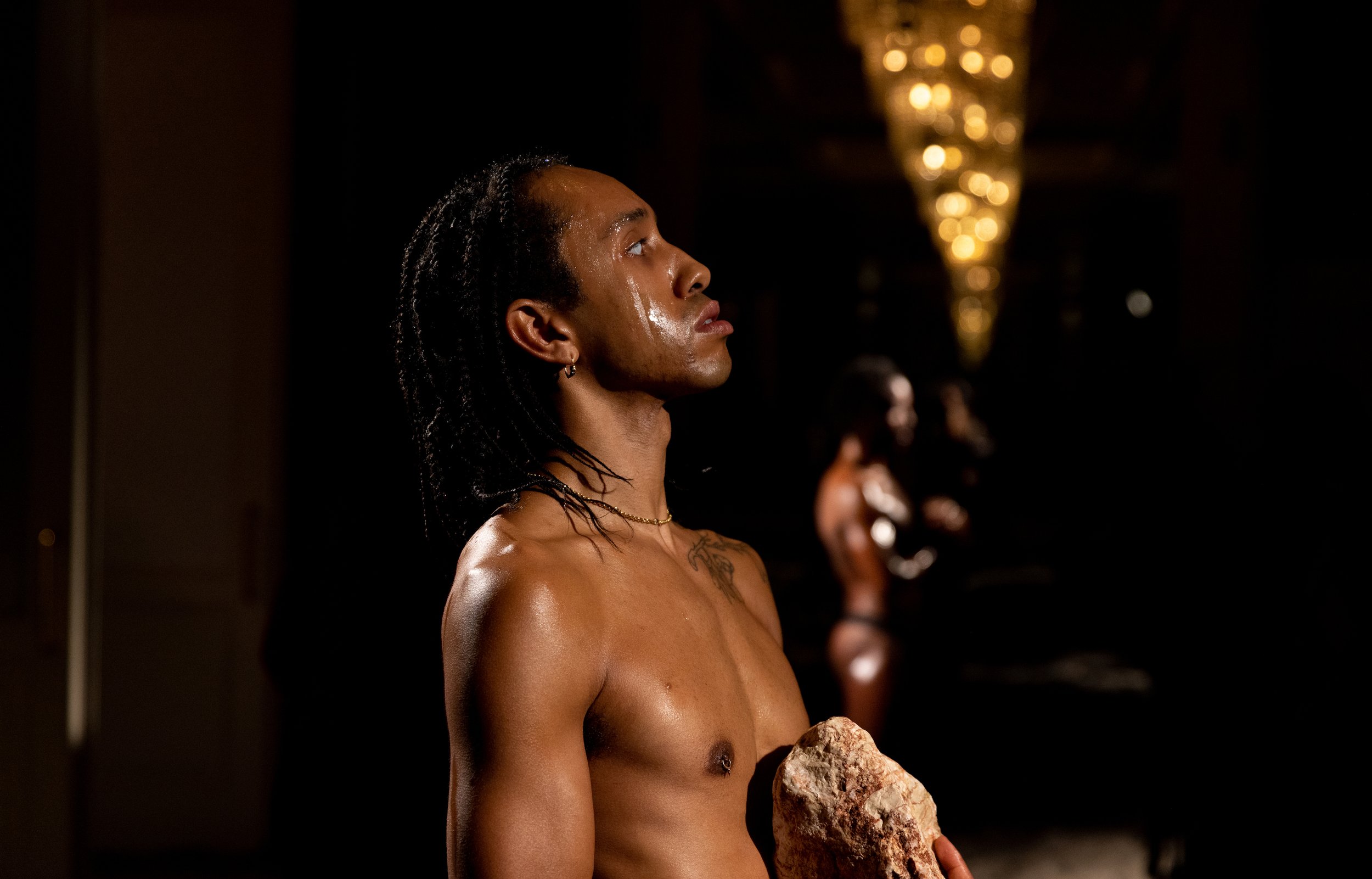February 2023
Miles Greenberg
Film directed by Alexa Caravia for Fountainhead Arts
Miles Greenberg posits questions about human physiology in his practice: His body of work is comprised of engaging installations and performances to raise quandaries about how people relate to their surroundings.
“The moment becomes part of the provenance,” Greenberg said. “Every person who’s in the space at a given moment will get recorded and documented in the space in the way that it looks at that time. I've done things in spaces that have changed and evolved over time.”
His recent performance at Pace Gallery, Fountain II (2023), exemplifies this approach. The piece consisted of two people standing atop a white pedestal that sat inside a pool of blood-red liquid. Fountain II was, indeed, a meditation on human emotion and how devastating despair can feel; it served as a sequel to one of Greenberg’s earlier works—Fountain I (2022)—which was a reflection on the “final stages of heartbreak—when one finally turns one’s entire body inside out to reach a sort of ecstasy,” according to Pace’s website. In another one of the artist’s works, Oysterknife (2020), the artist briefly lost consciousness after walking on a treadmill for 24 hours, showing what can happen when one tests the confines of one’s corporeal form.
“I'm [...] interested in what lies beyond the limitations of the body,” Greenberg said. “But without going way hardcore—it still has to be authentic in some capacity.”
Greenberg gives life to these ideas through his meticulous preparation process and his research practice, much of which is centered around anatomy and biology.
“It depends on the piece, but typically the timeline is: Five plus months [prior to the performance] is when I'll start doing research,” Greenberg said. “And then two months out, we start pre-production, and then a month out [we’ll be] properly producing and then like, four to six weeks is how long I usually train my body.”
At Fountainhead, Greenberg was able to prepare for new performances in a free and open-ended way, which allowed for him to research, create artifacts, and experiment with his studio practice.
“I think the [Fountainhead] team really understood the kind of asset that [performance art] could be for an institutional setting,” Greenberg said. “They took the time to understand the sort of dynamic of my work and what I've tried to leave behind and when I'm able to produce [it].”
Words by Isis Davis-Marks
